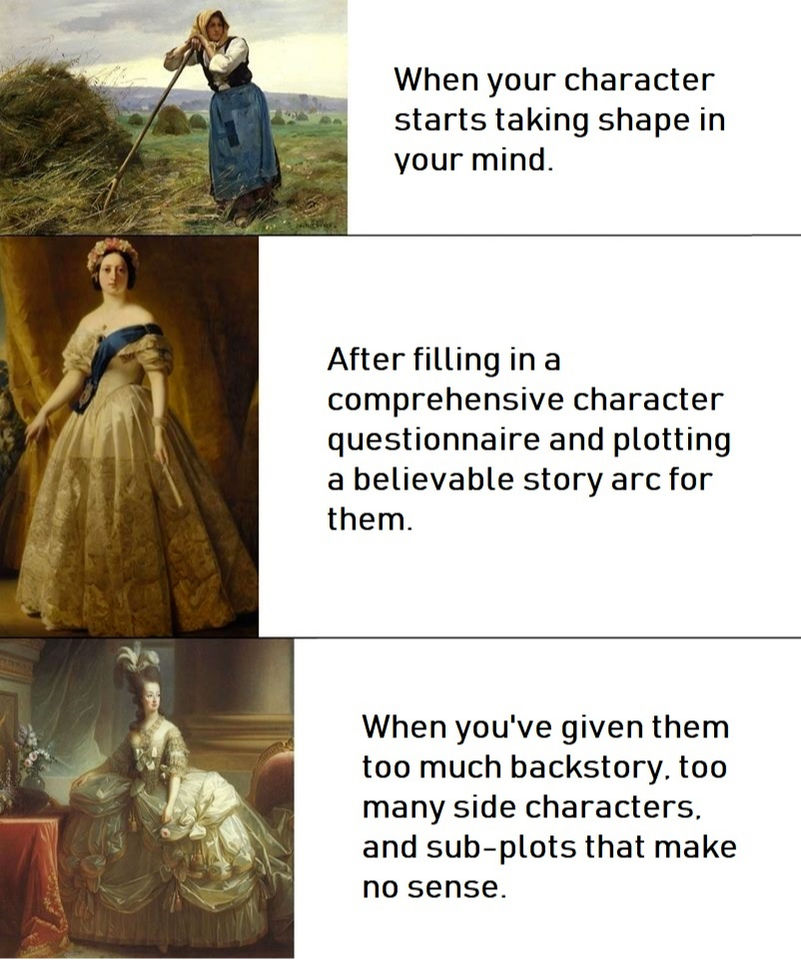 Note: Realistic characters are not always the best choice depending on your story and creative medium. I personally rely on relatable characters to drive my plot forward and engage my audience, but if you don't, that's okay! Below are some of my lessons learned on the best way to create characters that feel authentic, but I definitely do not have all the answers.
It all starts from the foundation. Ideas for characters come from a lot of different places - a dream, a movie, someone you saw on the street. Wherever your inspiration comes from, use it as a jumping off point - not as the final image. Often when we are inspired, we see the best or most interesting parts of a character emerge - push yourself to add dimensionality to that image.' Strategy 1: Question Your Inspiration
Alternatively, one of my favorite things to do is what I call a character survey. Instead of starting from the character and figuring out how they react, I start from the situation, and build backward to the character. This can help you think outside the box, especially if you feel like you're stuck in a creative rut. Strategy 2: Start With Plot
My third strategy starts with advice: be brutally true to your character. For example, if you decide your character is a shop clerk who is self-sacrificing at the expense of her own sanity, the clerk better be that way throughout the entire story. Don't be afraid to have your characters make bad or flawed decisions if they are decisions they would authentically make. Consider your own life: when have you made a decision you knew was bad, but also knew you had to make? Strategy 3: The Truth, The Whole Truth, and Nothing But The Truth
Ultimately, creating authentic characters is a long and iterative process - you're not going to get it right the first time (for the record, I still haven't gotten it 100% right). But it's worth it. It helps people connect with your writing the same way you do, to work through their struggles and process emotions. It allows people to feel seen, and like it's okay to make mistakes, bad choices, or spur-of-the-moment decisions. And finally? It does your characters, your plot, your world, and your story the justice they deserve. Writing Realistic Characters: My Three Favorite StrategiesComments are closed.
|
AuthorBridget is the author of Summer Twilight, available for purchase now! Categories
All
Archives
March 2021
|
